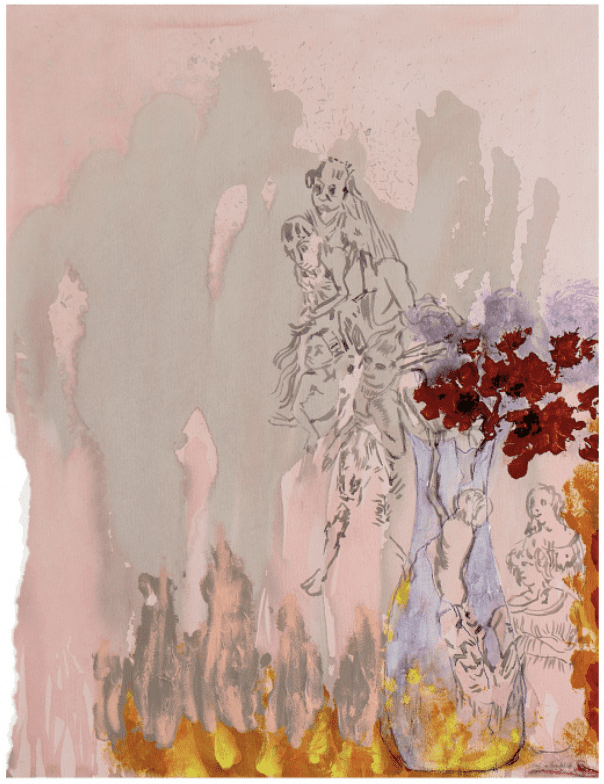Right on the edge
Artist news
Press release
For his first exhibition at Galerie 8 + 4, Christian Lhopital puts in tension some old works and his new series made in recent months. Convinced that drawing can only be reinvented if it rubs shoulders openly with the problems of painting, rubbing, collage, and the image in general, he continues to emancipate himself from the constraints to deliver works where representation is suddenly put in crisis. Faces (2015) thus slowly allows figures to emerge from a maelstrom of colours. References to the great classical paintings are evident. De Passage (2019) continues this interrogation on the infrathin and this threshold where figuration becomes more an evocation of the work of the image than an attestation of reality. The faces are ghostly as if sucked by the color. There is indistinguishable there, doubt, a form of suspension between the game amused with colors and the emergence of the human in all its singularity. Fixe Face Silence (2019) replays this eviction from form. In this series, figures and environment merge into a composition altering the distinction between background and figure. The drawing becomes blurred of vision. Nothing really emerges and it takes an eye suddenly constrained by the imagination to perceive in this graphite powder with colored gray tones some clues of a human presence. “I wanted to bring into play the encounter between shapes and textures. If these works are not strictly speaking scales that I make, they are regular. Perhaps more than large formats, they require very great concentration. I would say that the line and color are sharper than in the other works. »
Made in 2021, P’tit coin de peinture perdu, takes an opposite bias with a precision of the line. During the periods following the lockdowns, Christian Lhopital felt a need for delay. “Following the realization of large murals,” recalls Christian Lhopital, “I suddenly wanted colors.” Like all his series, this one finds its reasons for being in its immediate environment: the bouquets that adorn its interior.
His renewed attention to this theme is reinforced by his all-consuming passion for cinema. With astonishment, he realizes that each film, even in incongruous registers, has at least one bouquet; “I remember a western where, in an interior scene, you discover a bouquet.” But Christian Lhopital knows how much the very theme of the bouquet is one of the commonplaces of painting, even in its most regressive or decorative forms. “This theme of the bouquet at home amounts to reinforcing the place of the viewer in front of an image. What he sees is much more than a bouquet. It takes place in these watercolors and acrylics of other things. To be convinced, it is enough to look at the funds, all very worked. It is also worth seeing the figures that are emerging. A distracted look would therefore see only flowers. But, if we pay attention, we discover that these flowers are fake. Although inspired by existing flowers, these motifs are not naturalistic, they are inventions allowing me to work tones, line, color. The same goes for vases. All of them are quite ordinary, almost vernacular. I absolutely wanted to avoid painting very sophisticated, design vases. They are simple containers that allow me to play with the bottoms, the tensions… The tears that appear in the margins of each work are also important. It is a form of alteration of the surface, like a line in space that contradicts or at least dialogues with other features. They are also forms of alteration directly inspired by these ruined houses where a collapsed section of wall reveals a wallpaper torn off by time. These tears are also tributes to poster artists, a group of artists that has always fascinated me. So there is no nostalgia in these paintings. Some will not be able to help but see resonances with the great history of painting. But for Christian Lhopital the tear carries other requirements. It is nibbled from the surface. Under his action the flowers oscillate on this cursed edge that are death and disappearance. By this simple gesture, the artist opens the work to the fragility of the world and therefore a form of fullness, that of nature. And surreptitiously that of man.


